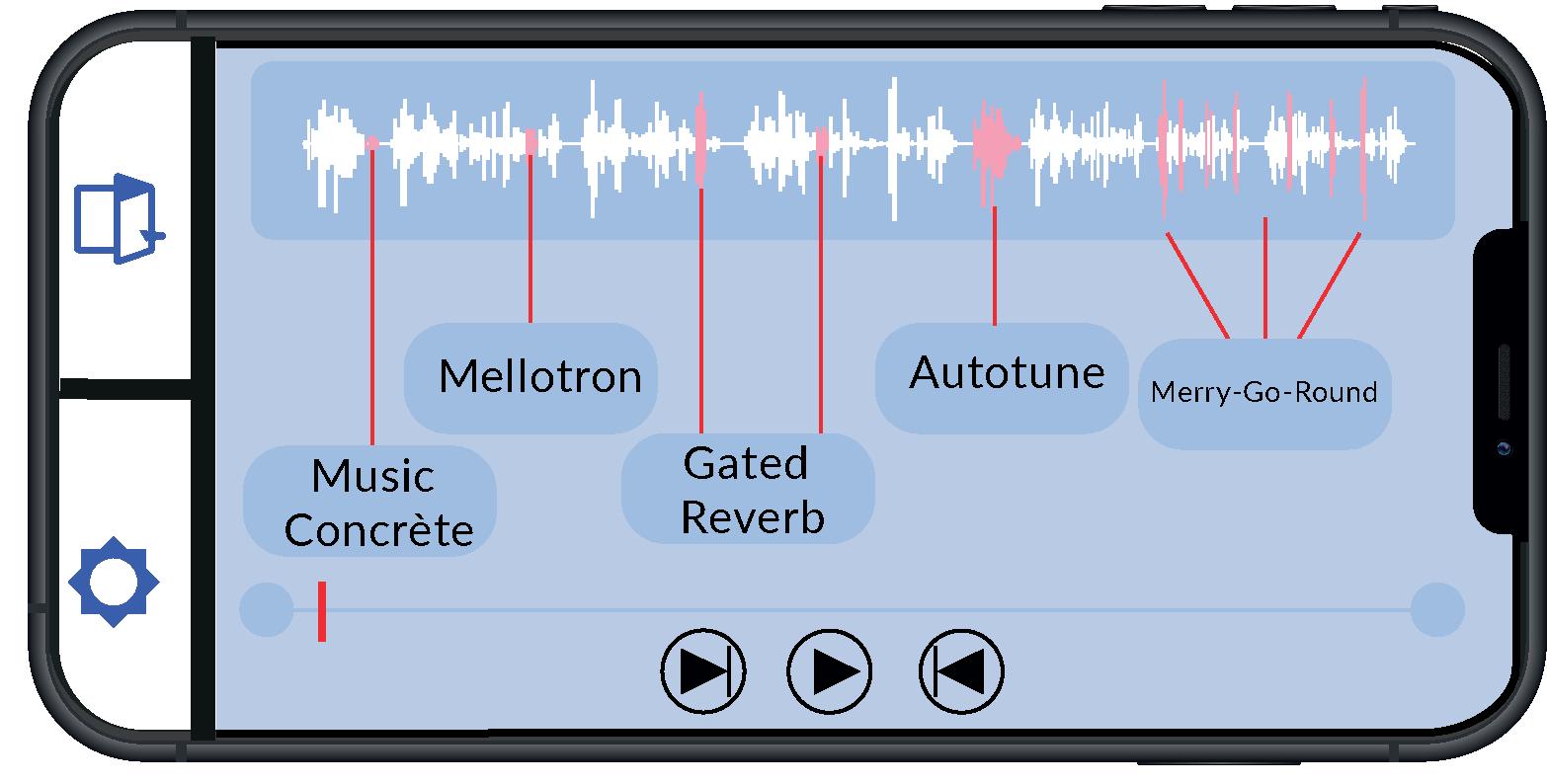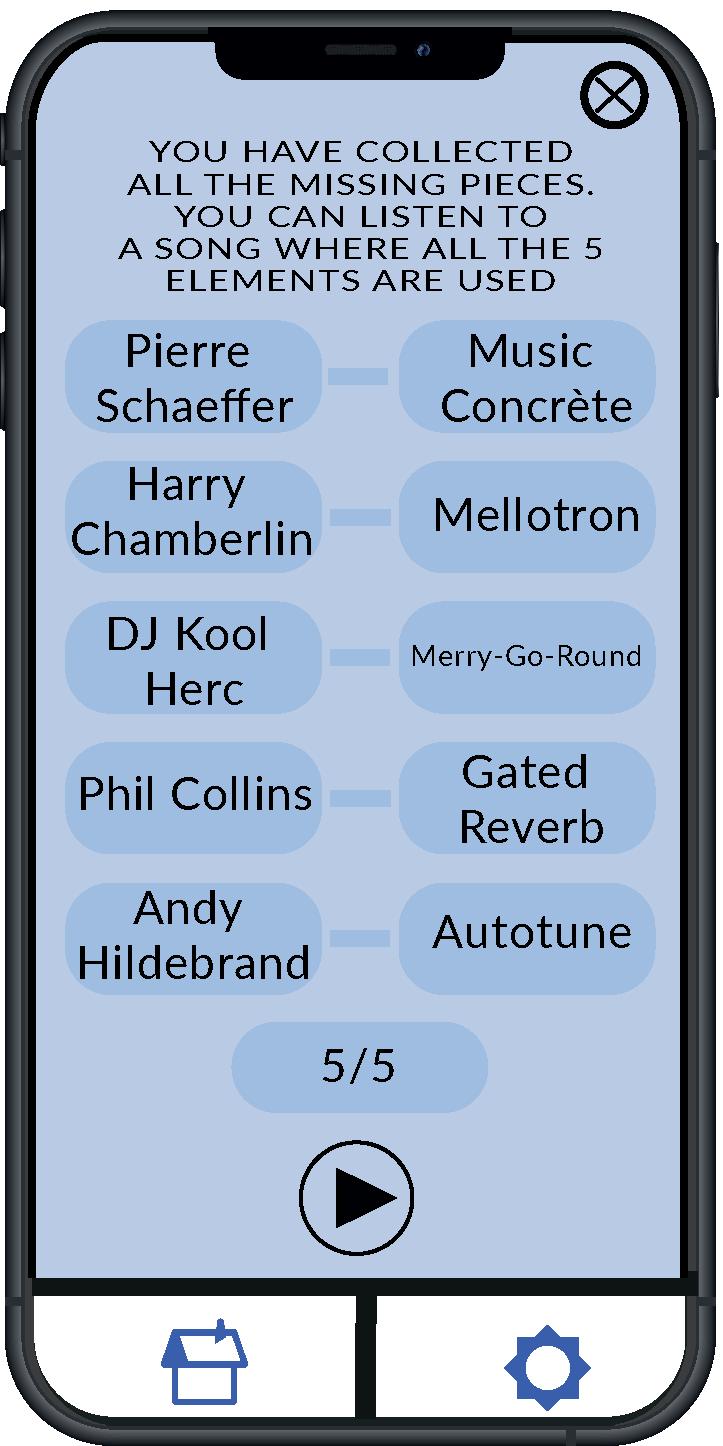

Interaction and StoryTreatment


“An interactive, narrative museum experience that presents a history of sampler based and electronic music and equipment, told through characters.”
The Sound in the Spark is an museum exhibit which explores the history of electronic and sampler based music by following a cast of figurehead characters based on real-life people and their stories within music.
Within the exhibit, participants will be guided through a chronological journey covering 5 key breakthroughs in the genre each with a central character and topic, such as a scientist who dared take his research into the study of sound - and thus, invented autotune - and how the dreamy, nostalgic music of 80s came to have such a stellar style thanks to one man’s accidental button press.
The experience is lively and interactive - boasting a number of unique minigames and collectables all related to the stories and characters within.
Accompanying the participants through their journey will be a narrator character - wonderfully mysterious in their own right, but no doubt recognisable as a huge face of the modern electronic music scene.
Interactivity is brought into the exhibit with thematic minigames and collectables throughout the experience, primarily achieved with a free app and smart devices provided by the museum.
These elements emphasize the key points of each story and can be enjoyed by participants of all demographics. These games and puzzles also serve to put the participants in the shoes of the characters, adding another level of individuality and interest to the separate rooms.
Participants will follow figureheads stories’ closely within each minigame as each one will be unique and tailored to the figurehead character of the room. The minigames are simple and easily digestable for both accessability and pacing reasons, as all participants are welcome to experience The Sound in the Spark in the manner that best suits the individual.
The second stage of interactivity are the overarching song collectables - once a room and/or minigame is completed, participants will be prompted to interact with an NFC contact point to collect a fragment of a custom-made song - collect all the pieces from all the rooms, and a wonderfully unique song is awarded to the participant at the end.
To ensure the participants can truly get a feel for the characters, a narrator will accompany them in the app and on screens within the exhibit - none other than Daft Punk. The narrator will interact with figurehead characters in scripted interactions, modeled after their real personalities and interviews.
Narrative StructureCharacter Concept


Character-driven storytelling is a core part of human history, extensively covered in cultural oral history, non-fiction biographies and modern cinema. To implement this in The Sound in the Spark, a cast of figurehead characters alongside a central narrator have been developed for the participants to interact with and learn from.
Each character has a deep and personal backstory, which is explored in relation to their musical innovations and contributions within the exhibition. All character interactions are developed from real-life interviews and discussion to give the best true-to-life representation.
The exhibition is arranged chronologically, with evey character having their own distinct time period ranging from the early 1940s to the recent 1990s, while the narrator character covers the 1990s-2000s up to the present day.
By framing the characters as the primary method of information exchange, participants will gain insight on these people and their lives, encouraging connection, reflection and empathy.
The full cast, their time periods and Associated Acts are as follows:
• Pierre Schaefer - 1940s, Music Concrète
• Harry Chamberlin - 1950s, the Mellotron
• DJ Kool Herc - 1970s, the Merry-Go-Round
• Phil Collins - 1980s, Gated Reverb
• Andy Hildebrand - 1990s, Autotune
• Daft Punk - 1990s-Present Day, Accompanying Narrator
The Sound in the Spark is arranged in a chronological, linear narrative structure guided by the narrator character. Participants needn’t worry about piecing together a timeline on their own or getting lost, as the narrator will keep them on the right path and leave them free to enjoy the experience to the full.
Individually, each character’s exhibit and room is framed around a mini-structure emulating Freytag’s Pyramid. As the character is introduced, the exposition into their backstory and life engages participants right from the start - quickly followed by the “conflict” when the need for their Associated Act is revealed. This builds into a climactic action point where the Associated Act is actually developed or invented, and a conclusive “where are they now?” winds down to round out the character’s story.
Role as NarratorDaft Punk

Originally from France, the music duo met in Paris at the beginning of the 90s. Before becoming the Daft Punk, the two played in a rock band named Darlin’, but the experiences of night clubs and underground scenes influenced them to change genre and fully dedicate themselves to electronic music.

The name Daft Punk originates from a negative review written on the Melody Maker magazine, which described their music as “daft punky thrash”.
Above: Daft Punk in Paris, 2000, before their iconic helmets were developed as an identity
Photographed by Phil Knott
Success came with the song “Da funk” in 1995, where a mix of funk and acid house was used. In 1997 their debut album, Homework, came out and made them even more popular around the world. With their 2001 album, Discovery, they created not only one of the most successful albums in electronic music history but also initiated one of their most peculiar characteristics: their unique style in presenting themselves dressed in sleek costumes and metallic helmets.
They played and sampled their own instruments, such as guitars, live keyboards and bass, with a focus on the actual result. Their uniqueness comes from the fact that they try to break conventional music rules – what is labelled as crazy by other musicians is what makes them stand out from other musical acts. As stated in video interviews about Remastered Memories (2019), their joy comes from making music. The success generating from it is seen as an incentive to be more creative and to try and influence people beyond their music.
Daft Punk will be the characters guiding participants around the exhibition, as they are the some of the best representatives of modern, contemporary electronic music.
As artists, they played a huge role in making this genre of music popular among many different generations, inspiring many to actively join the music scene. They will guide participants through different exhibits to meet the figurehead characters and see the musical equipment that enabled them to become the Daft Punk duo that is known today.
They can be seen as mysterious characters, due to their lack of interaction with the media and rarely showing their faces in public. On this exhibition, the audience will have a unique chance of getting to know the French duo and interact with them while learning about electronic music and its main contributors.
Above: Daft Punk in 2013.


Photographed by Peter Lindbergh
Left: Daft Punk, photographed by Mathhieu Cesar
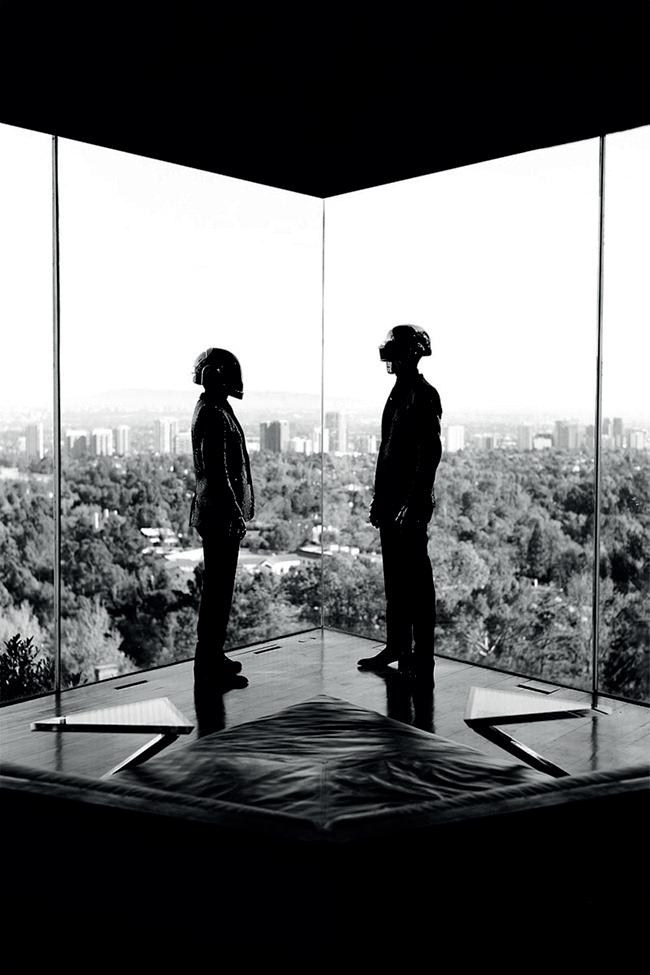

Associated ActsCharacter Cast
Pierre Schaeffer Musique Concrète
A man of many things, Pierre Schaeffer was responsible for the notion that recording audio could be used for more than just archiving data, and introduced the world to a whole new ideology of sound.
Harry Chamberlin
After various and colourful beginnings spanning factory work, WWII electrical systems and an 8-piece dance band, Harry Chamberlin looked upon an organ and a tape recorder and wondered if, together, they could be something more.
DJ Kool Herc
Roped into helping his sister earn extra money for clothes, Clive Cambell began playing hard funk music for his neighbourhood - and began a journey that would culminate in his persona as DJ Kool Herc being crowned the Founder of Hip-Hop.
Phil Collins
Originally a child actor, Phil Collins switched over the music industry and subsequently tore up the charts with his signature sound and well-loved songs, becoming 1 of only 3 recording artists to sell over 100 million records worldwide.
Andy Hildebrand
Following success in scientific pastures as a geophysical engineer, Andy Hildebrand was free to return to his first passion of music, armed with knowledge that had never before been applied to sound.
The musical movement that took to the traditional foundations of sound and song with a wrecking ball - the sampling, electronic and experimental genres all owe their roots to this act of defiance.
Mellotron
An intrument was originally designed to be just one thing - an instrument. But what if a single keyboard could be not just a keyboard, but also a guitar, violin, kickdrum and trombone as well?
Merry-Go-Round


When the music is flowing, sometimes just one song is not enough. Cue the Merry-Go-Round technique, an innovation for when all the crowd wants is more, more and more.
Gated Reverb Autotune
The 80s was truly an iconic time in many ways and the world was expanding at an unprecedented rate - but the fuzzy nostalgia of blurry echoes will never really fade. Indeed, it’s no stranger to you and me.
An era-defining innovation distinctive in its diviseness, the tweaking of human vocals in post-processing is something many people love to hate and hate to love.
Pierre Schaeffer
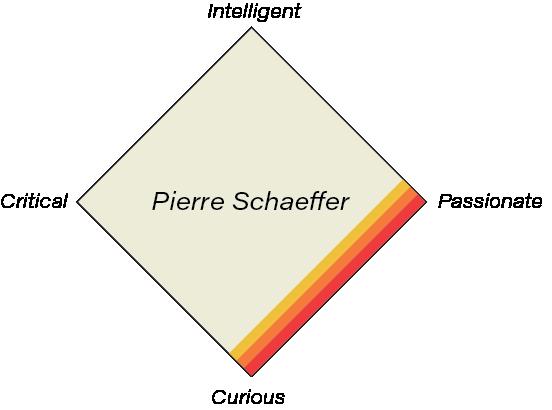
Pierre Henri Marie Schaeffer (1910-1995) was respected in many fields for his contributions regarding communications, acoustics, literature, radio, cultural criticism and anti-nuclear activism. His most recognised role is pioneering the avant-garde music movement known as musique concrete.

As a result, he is considered one of the most influential experimental electronic artists in history, having been the first composer to use contemporary recording and sampling techniques that are now in use worldwide by the grand majority of record companies.
Active as an inventor, engineer, composer, writer and researcher, Schaeffer was well-versed in many different areas. He founded and was involved in many, many projects based on both personal interests and political stances throughout his life. A naturally experimental person, he was known to always pushing boundaries to discover and create the new. To balance, Schaeffer was also well-spoken, heavily invested in critically commentating on his own ventures, current events, and cultural climates.
A form of music composition that uses recorded audio snippets as primary raw material. All kinds of sounds may be used, not limited to actual music clips and instead may be derived from any source such as the human voice, environmental recordings and computer-generated sounds. The collated collection of audio may then be manipulated even more by new technologies such as the phonogène. Originating in the 1940s, this style of sound manipulation is considered the forefather to modern sampling, experimental and electronic music.


Schaeffer pioneered the use of magnetic tape by splicing and looping sound snippets together in a single reel, and even reversing or inverting recordings while doing so. This is the precursor to the modern day “timeline” feature present in digital audio and video editing software, where terminology has been kept on with functions such as “cut” and “slice” referring to the physical action of slicing tape recordings.
Alongside Jacques Poullin, Schaeffer was also instrumental in the development of the phonogène - a keyboard-controlled tape player capable of multi-speed manipulation. A key enabler of music concrète, the device allowed composers a previously unprecendented number of ways to play with and reframe their recorded audio, often twisting and morphing samples beyond recognition.


Minigame / SongScript Excerpt


[Scene: SCHAEFFER is tinkering in a studio, surrounded by various machines and tape cuttings. A snippet of an abstract sound is played back from one of the machines.]
DAFT PUNK: Hello Pierre, it’s nice to see another French person around here!
[SCHAEFFER looks up and distractedly greets the PARTCIPANTS and DAFT PUNK]
SCHAEFFER: Ah yes, hello, it’s great to see you! Tell me, how is your music coming along these days? I’m always curious to see what’s new in the world.
DAFT PUNK: Well, it’s just here and there and everywhere really, we’re still working on our upcoming releases. What are you doing there? That machine looks very different from anything in our studio these days.
SCHAEFFER: Oh, this? [Gestures to table covered in tape clippings and a phonogène] I’m adding my samples to my project, going through the recordings I took from a train station last week.
DAFT PUNK: A train station? That sounds nothing like anything from a train station to me...
SCHAEFFER: Yes, well, it’s being played backwards so that would explain why it’s not recognisable. But does where the sound came from really matter? All sounds are sounds in the end. To be honest, I’m rather unsatisfied with the state of music right now, and so I’m working to change that.
DAFT PUNK: Weren’t you an engineer before though? Surely you are going to have some... criticisms? From people who don’t think you are qualified to speak on such things.
SCHAEFFER: [Schaeffer puts down the tape he is fiddling with and turns full attention to DAFT PUNK and PARTICIPANTS] You make a point, but there is more to my story of how I got here, in this studio, making music. I’m not unfamiliar with the classic foundational music studies - both of my parents were musicians and I did my part to study the theory, So I wasn’t unknowledgeable at the start of this venture, and of course there is always chance at play when a non-specialist makes a jump into a new area. But also, I worked as an electroacoustic engineer - so at work, during the war, I was surrounded with sound too. [SCHAEFFER sighs] After the war was over and the Germans gone, we had yet to manage to push away the foreign Austrian 12-tone music that pervaded the airwaves. I saw this happening, and I wanted to be a part of it. Here, let me show you how my friends and I got started... [SCHAEFFER moves to another part of the room]
Right: Identify the sound samples used in a song clip from the options given. Different samples have different types/levels of processing such as playback speed, adjusted to the chosen difficulty level.
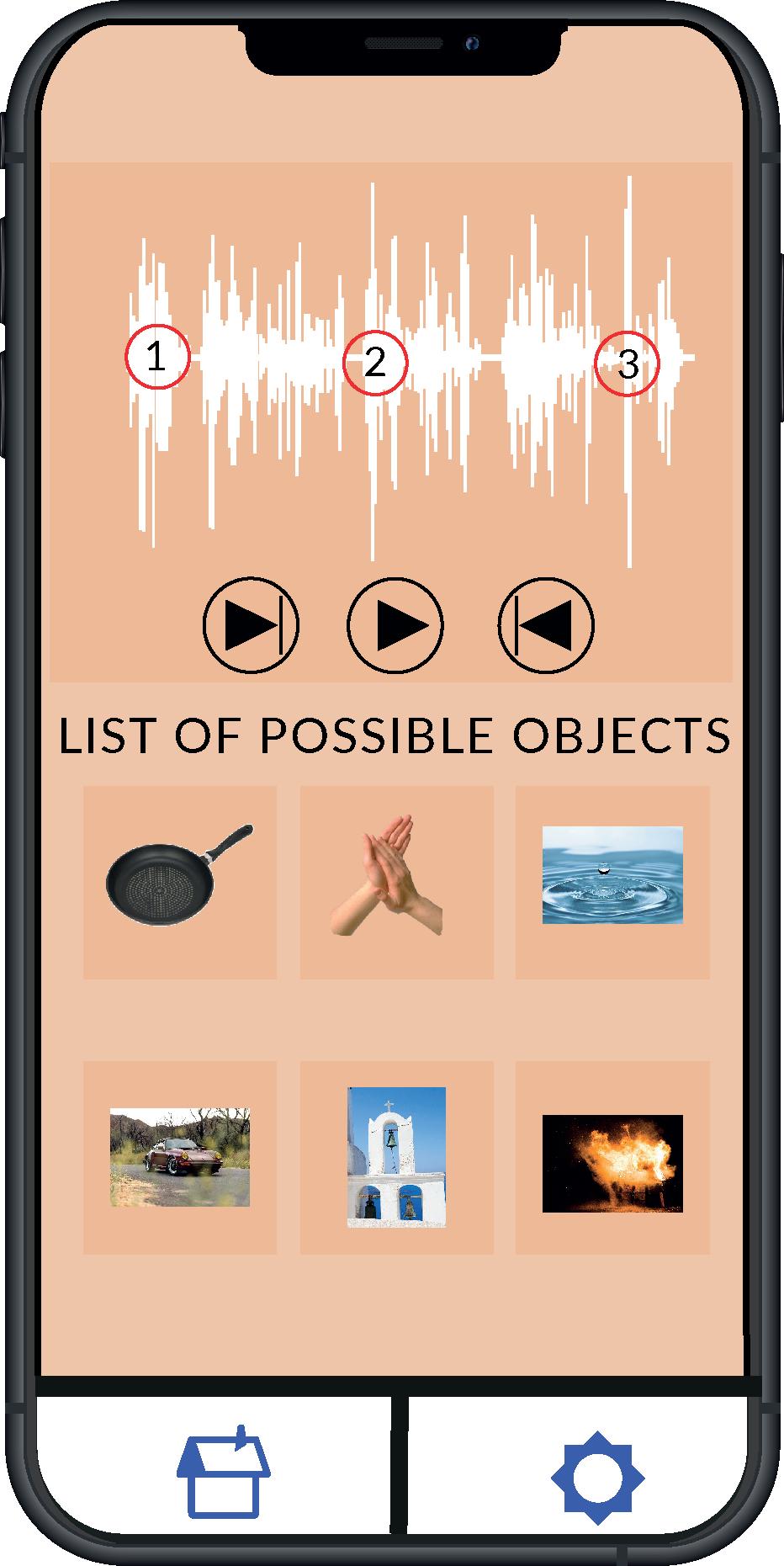
Le Trièdre Fertile (1978) in collaboration with Bernard Dürr Eclectic electronic album, best listened to all in one sitting. All sounds in the album are synthetic/ electronic, and it’s Pierre Schaeffer’s only composition to exist as such. Regarded as one of his most experimental works, with little obvious reference to traditional music structures and conventions.
Recommended track - B6 Baroque (Second Interlude).

Harry Chamberlin

Harry Chamberlin was a Wisconsin based inventor responsible for the creation of the first-ever tape-based sample-playback keyboard. His idea came from his recording himself playing the organ. He then developed the idea of playback music as a source of home entertainment and soon began designing the first Chamberlin instruments as early as 1949. The Chamberlin’s use as a commercial instrument in rock music was never given consideration, as Harry Chamberlin generally was not a big fan of the genre. After various experiments in his house, the first Chamberlin recordings were undertaken.


His passion for music, perseverance, and innovation brought him to create a concept that has revolutionised the way music was produced.
If it was not for his invention being “stolen” and sold over in the UK, perhaps today there would be a different story and a different music heritage.
Mellotron



The Mellotron is a sampling keyboard that was developed from the Chamberlin. It works by using strips of magnetic tape passed over a playback head playing the sound in a similar way a tape recorder does, but the strip only lasts about 8 seconds. When the key is released, the tape rewinds, ready to be played again. Each tape has a unique recording of the note played by the actual instrument(s). The tone has a particular character, an emotion that is absent from cleaner digital sounds which has led to its lasting popularity.

Before digital technology introduced high quality orchestral sounds for keyboards, the Mellotron allowed bands to add strings, choirs, brass and other sounds to a track without having to use an orchestra. During the 60s and 70s the music scene saw an emergence of progressive rock which often combined classical music with rock. The Mellotron was the ideal instrument for that, allowing a newfound freedom in the music scene.
From its early days in the 60s until the first few years of the 21st century, a total of 15 different models were developed, each carrying different technical specs.The model that really made an impact in the music world is the M400, developed in 1970. The M400 had a neat, compact design that allowed musicians to transport it easily, and was widely used by many artists around the world, such as Led Zeppelin and David Bowie.
Minigame / SongScript Excerpt

DAFT PUNK: Right here we have the person whose contribution probably helped people like us to emerge and establish themselves in the music industry. We are talking about Harry Chamberlin, the inventor of the Mellotron
HARRY CHAMBERLIN: [ANGRILY] The Chamberlin! It’s called The Chamberlin.

DAFT PUNK: Yes, sorry. The Chamberlin. Can you tell us a bit more about this?
CHAMBERLIN: Well, since you mentioned the Mellotron, which is a more advanced development of my Chamberlin, I guess we will stick to the first one, also because it has contributed more to the music we know today.
DAFT PUNK: Genesis made use of it in some of the songs, and also the Oasis and David Bowie. We’ll go into more details later on. How does the machine work?
CHAMBERLIN: It uses pre-recorded sample music on a tape with a combination of springs to generate the sound. In order to do that, you can’t just hit the keys, you have to push them down and each key last for about 7 to 8 seconds, then you will have to wait 1/8 second before you press again.
DAFT PUNK: What made you come up with this idea?
CHAMBERLIN: [JOYFUL]All I wanted was to record myself playing the organ at home and I never thought of this to become such an important instrument for musicians around the world.
DAFT PUNK: How did that happen?
CHAMBERLIN: [SAD VOICE] One of my sales agents, while on a trip to the UK, sold the The Chamberlin as his own idea and the rest is history. Despite a better sound quality, my Chamberlin never had an advantage in terms of market share. It was heavier than the Mellotron, especially the Mellotron-400 version, which could be easily taken around with you.
DAFT PUNK: Sorry to hear that. Thank you very much!
CHAMBERLIN: It is what it is. Thank you for listening.
Above and Right: Help Harry Chamberlin in his “personal fight” against the Mellotron. Based on the information provided by Harry Chamberlin, identify which instrument is hidden under the surface of the screen. In order to do so, scratch the surface with a finger and then answer some questions.
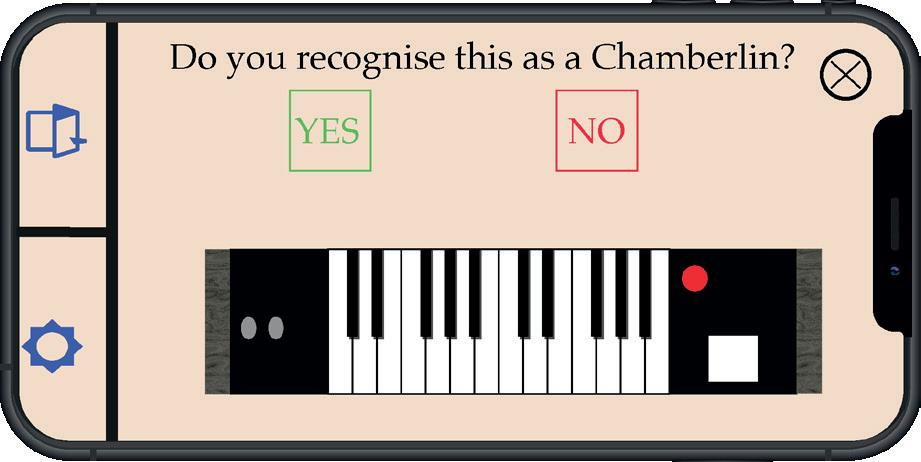


The reason this song was picked is because the song was the opening track of the A trick of the Tail album by Genesis and this album was also the first one to feature Phil Collins, another character featured in the exhibition.
The Mellotron was used for String and choir sound, generating a very particular experience towards the ending section.

DJ Kool Herc



Clive ‘Kool Herc’ Campbell was born in 1955 in Jamaica but moved at 12 to The Bronx in New York City, which was known for its high crime rate and gangs at the time. His family lived in 1520 Sedgwick Avenue, which is the location of the iconic “Back to School Jam” party that Herc DJ’d at, gaining him popularity throughout the borough and beyond. He is most recognised for inventing “breaking”, “scratching”, “The Merry-Go-Round” technique and being one of the first ever rappers. As a result, Herc is often considered as the “Father of Hip-Hop”, having been the one to invent these foundational hip-hop techniques through sampling and isolating electronic music.

Herc’s passion for others’ enjoyment is displayed in his creativity, as he focused his deejaying techniques on creating an environment where people could have a good time and be offered an escapism to troubles in their personal lives. He is driven, as he deejayed parties as a way to make extra money to help the family. Following on from that, he worked on a campaign in 2007 to ensure that 1520 Sedgwick Avenue would not be sold, but rather made a historic building as the “birthplace of hiphop”.
‘Merry-Go-Round’


Herc’s first sound system consisted of two turntables connected to two amplifiers and a Shure “Vocal Master” PA system with two speaker columns. At the “Back to School Jam”, he introduced a technique he had been developing for some time, which he called the ‘Merry-Go-Round’.
Herc would focus on a short, heavily percussive part in the record called the “break”. Since this part of the record was the one dancers liked best, he would isolate the break and prolong it by switching between two record players. As one record reached the end of the break, he cued a second record back to the beginning of the break, which allowed him to extend a relatively short section of music into “five-minute loop of fury”. This allowed him to blend together sections from the same track, or similar tracks, into one long breakbeat that you could dance to.
This innovation gained a lot of success as Hip-Hop culture often included dancing and rapping at parties. Herc said he noticed that those moments would be the highlight of the parties and he wanted to make it last longer. This technique is specifically called the ‘Merry-Go-Round’ because according to Herc, it takes one “back and forth with no slack.”
Minigame / SongScript Excerpt


DP: Hey, Clive!
KH: Yo, what’s up my b-boys and b-girls? I hear you’s are hoping to hear something about how hip-hop came to be?
DP: You know it, man
KH: A’ight. Well, let me introduce you to the king, the “Father of Hip-Hop” – Clive ‘Kool Herc’ Campbell’. That’s me by the way.
DF: Forever humble!
KF: Now, I was born in Jamaica in 1955, but raised in the Bronx, here in New York. The Bronx was tough, its residents had to be tougher. And if you wanted to make some sort of name for yourself [scoffs], well that was gonna be toughest. The family got by though, and my sis’ Cindy was a known party thrower. In fact, that’s where our story properly begins: August 11th, 1973. Cindy wanted to make some extra cash before the school term started. So, she hosted a “Back to School Jam” party, here at 1520 Sedgwick Avenue where we lived. Now I’d been playin’ around with music and records, so naturally Cindy asked her me to step up and DJ the set. I won’t bore you with all my technology ramble, but by using just a guitar amp and two turntables, history was made that night. By isolating and extending the “breaks” in my records – the instrumental part you get up and dance to – I invented “The Merry-Go-Round”. It lets you play that one part of the record over and over again, so you can just keep on dancing. Or as I like to say, it takes you “back and forth with no slack”. I would soon be known throughout the Bronx as DJ Kool Herc, and very soon the whole city would know too.
DP: Wow, we might have to use that one sometime, ha! So, the people loved it?
KH: You already know! By 1979, hip-hop was a mainstream genre. My shouts to the dancers would become what you’s now call rapping.
DF: That was you?!
KH: What can I say? My parties moved from 1520 to the parks so we could get everyone in. The parties became a safe space where Bronx youths could express themselves, instead of running into trouble on the streets.
DP: Unreal, man. Your influence in music is enough, but that is legendary. Well folks, please give it up for Clive ‘Kool Herc’ Campbell - not just a talented DJ but a Bronx Legend and the “Father of Hip-Hop”.
Below: Help DJ Kool Herc find his equipment before the “Back to School Jam” party starts. A short timer begins while the participants interact with the touchscreen maze of the Bronx streets until they find two turntables and an amp. To win, they must find all three before the timer ends.

“Give it Up Turn it Loose” –James Brown
When developing the ‘Merry-GoRound’ technique, Herc was on the search for songs that had a good instrumental break but had the potential to work with having it extended. One of the most iconic songs Herc would use the technique on was James Brown’s “Give it Up Turn it Loose”, as the length and beats worked incredibly when repeated.

Phil Collins

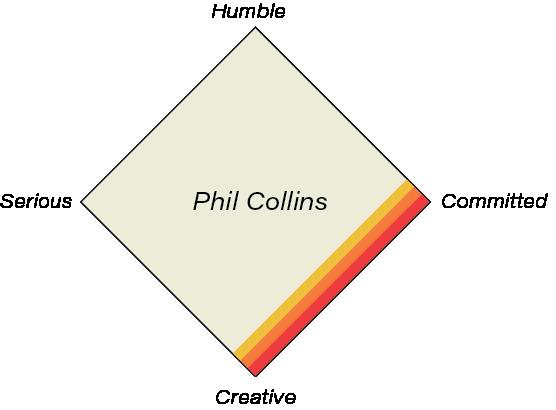
Phil David Collins is an award winning musician from Middlesex, England. He formed his first band, Flaming Youth in 1969, but left a few years later to join Genesis as the drummer. After a experiencing a meteoric rise to fame with genesis, he decided to start a solo career. It was during his solo career that he made one of the biggest musical breakthroughs of the 80s. Through a fortunate accident, he discovered gated reverb, a revolutionary technique that defined the sound of the 80s.

Phil started playing drums at the age of three, when he was given a toy drum by his parents. By five years old, he had already graduated to a drum kit, built by his uncle. His early life revolved around playing the drums, and when he started playing for Genesis he began to hone his singing skills and started doing backing vocals. Although he was in one of the biggest bands at the time, he remained humble and never really took part in the “rockstar lifestyle”. Even at the age of 69, he remains commited to making music and still tours to this day.
Gated Reverb

Before Collins made his breakthrough, the only ways reverb could be acheived were through an echo chamber and plate reverb. An echo chamber was a large room with walls designed to bounce the audio around. Plate reverb was created by placing a steel plate right infront of the amp, which gave the recording a very metallic sound. Both of these techniques were very expensive, so reverb was a extremely rare effect before the 80s.
In 1979 during a studio session with ex-Genesis singer Peter Gabriel and producer Hugh Padgham, Phil Collins stumbled onto one of the greatest musical discoveries of the 80s. A new recording console had been fitted in the studio, fitted with a mic that allowed the musicians to talk to the people in the studio. The mic had a feature called a ‘Noise Gate’, which cuts off quieter sounds so that they don’t interfere with the recording. While playing drums for Peter’s solo album, Padgham accidentally left the mic on, causing the drum sound to come through the talkback mic. This made the drums sound puny and echoic, and became so widely used that it shaped the sound of the 80s.
The most recongisable song to use this type of audio processing is “In The Air Tonight” by Phil Collins. The iconic drum fill uses the eerie yet huge sound they managed to acheive using the technology they had just dicovered, Gated Reverb, and the success of this song as well as Peter Gabriel’s “Intruder” (which Phil played the drums on) are what influenced the sound of the 80s, as everyone was wanting to use this effect.

Left: Model 140 plate reverb device

Minigame / SongScript Excerpt


[Scene: PHIL COLLINS is in the studio, recording drums for his ex-bandmate Peter Gabriel’s newest album]
DAFT PUNK: Hi Phil, how’s the recording going?
PHIL COLLINS: Woah, didn’t see you guys come in! Nice helmets by the way, very high tech.
DAFT PUNK: Merci mon amis. What are you working on?
COLLINS: I’m just recording some drums for my mate Peter at the moment, want to give it a listen?
DAFT PUNK: Absolutely!
[First example of drums with gated reverb plays from the studio machines]
COLLINS: So, what do you think?
DAFT PUNK: That sounds great, how do you make them sound like that?
COLLINS: I call it gated reverb, it’s what happens when you record the drums in an echoic room and then add a noise gate and compression on top of it. Neat, right? I think it’s pretty nostalgic.
DAFT PUNK: Nostalgic is right, but that sounds a bit fiddly.
COLLINS: Yeah, you have to get the levels just right! Want to give it a shot?
DAFT PUNK: Oui, let’s try it out! [PARTICIPANTS are prompted to begin minigame]
Right: Match different levels together to create the correct gated reverb sound. There are two panels, one for the compressor and one for the noise gate. Hold a button to increase the level of each effect - the level will decrease while the button is unpressed. The levels will lock in once they have the effects at the correct point. At harder difficulties, the thresholds will begin to move and will no longer lock in, meaning the timing to win is tighter. A drum track will play in the background as the levels move, giving an audiotory clue as to how close the levels are to the correct amount.


Phil Collins’ most recognisable song is undeniably “In The Air Tonight” from his album “Face Value”, released in 1981. It begins slowly with calm synth chords and a quiet drum machine, then explodes with an instantly recognisable drum fill. The drums feature his iconic “Gated Reverb” technique that he, Hugh Padgham and Peter Gabriel discovered in 1979. This song is undoubtedly one of the reasons gated reverb became the sound of the 80’s, as everyone wanted to emulate the unique sound of the drums.

AutotuneAndy Hildebrand


Auto-tune is a digital audio workstation plugin (software) or a stand alone rack mounted unit for live performances. It shifts the pitch of the vocals it’s given to the nearest correct semitone. Making messy human vocals, perfect! Producers have been able to alter vocals for decades before autotune; but the secret sauce was altering the pitch without diminishing the quality of the original recording.
Left: Dr Andy Hildebrand (2018). Photograph from: The Jerome and Dorothy Lemelson Center for the Study of Invention and Innovation
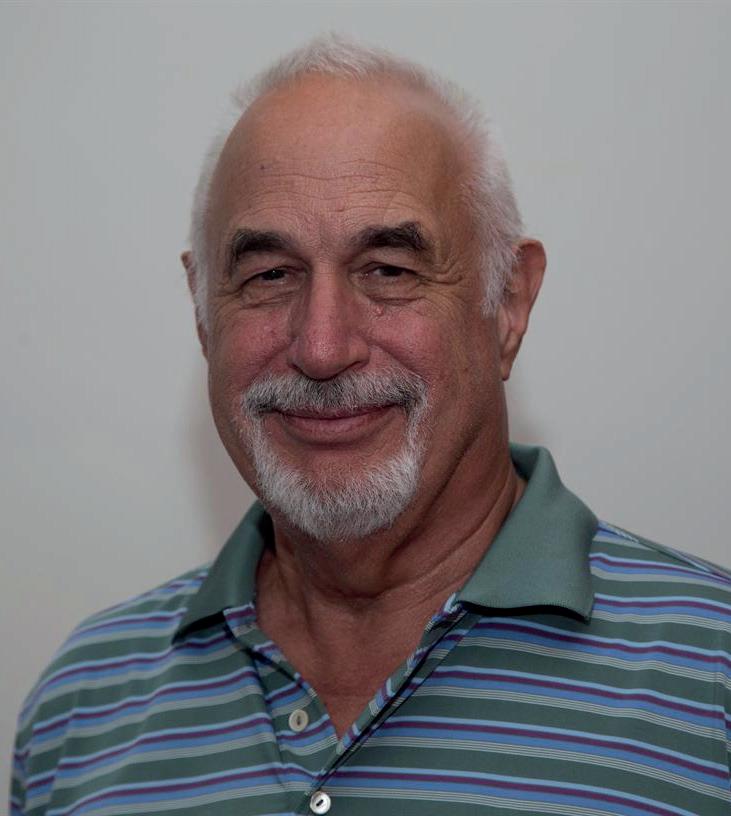
Above: Dr Andy Hildebrand & His Auto-Tune Equation (2016).
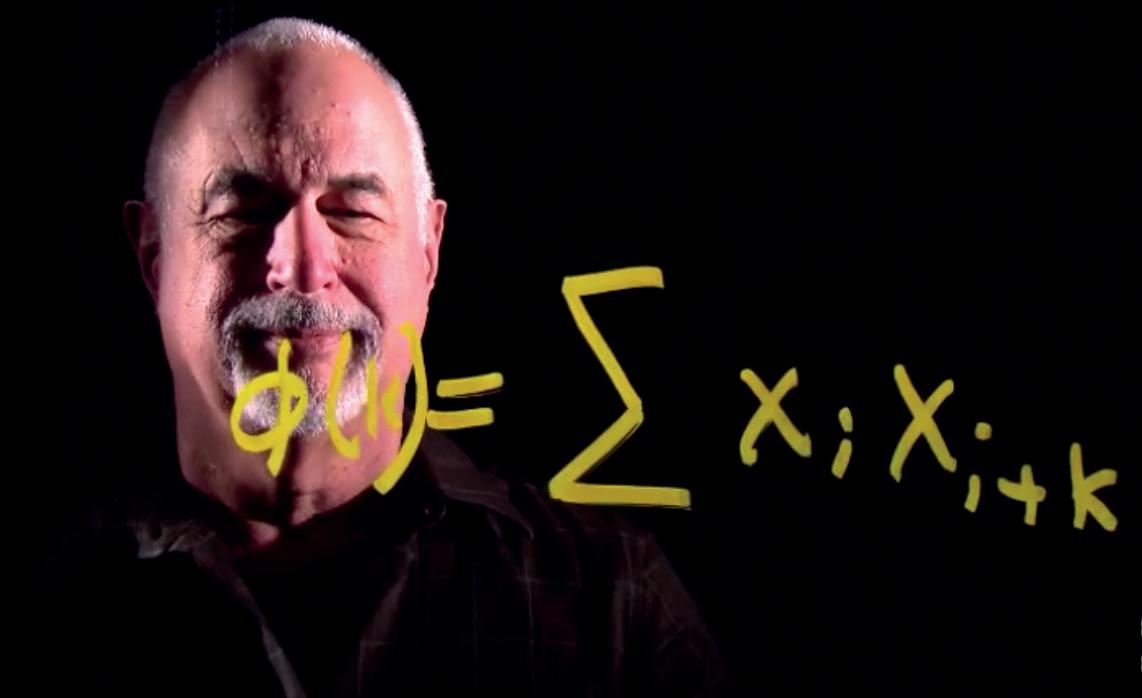
Photograph from Priceconomics

Dr Andy Hildebrand is a research scientist and inventor. He worked in the geophysical industry for oil giant Exxon; where he developed a stand-alone solution for using sound waves to detect oil deposits below the ground. Hildebrand left his position at Exxon to pursue his first love, music. He decided to study music composition and wanted to improve the process of digital sampling in music. Hildebrand developed various music technologies under his company Antares, eventually releasing the breakthrough auto-tune software in 1997.
Dr Andy Hildebrand is an interesting character. His genius is clear in his world-shifting inventions and he’s not afraid to show them off. He’s a confident man and rightly so however, his pride can deform into hubris if left unchecked lending to a sense of cockiness to those who don’t know the doctor well. At his heart, Andy Hildebrand is a nerd who loves using algorithms to change the way the world works and that’s why we love him.
Auto-tune had been in use within the music industry for about a year before the release of “Believe” by Cher but prior to the euro-pop hit, it was an industry secret. Auto-tune was originally designed for pitch correction; that is taking the imperfect pitch of a person signing and changing the notes to be perfectly on-pitch. If done well, you wouldn’t know it was there at all.
Countless artists and producers have followed in the footsteps of Cher and “Believe” and used auto-tune as a way to add some robotic, modulated flare to their music. Notable examples of its use are when Kanye West used his own auto-tuned voice in place of a guitar solo on the epic “Runaway” and Daft Punk’s electronic smash hit “One More Time”. Some of the most popular and influential music of the 21st century uses auto-tune to great effect.
Above Left: A modern version of Antares Autotune software. Photograph from: The Urban Recording Company.

Above Right: Roland AIRA VT-4 VOICE TRANSFORMER. Modern stand-alone rack mounted autotune equipment. Photograph from Amazon Japan.

Minigame / SongScript Excerpt


DAFT PUNK: Now, I’d like to introduce you to Dr. Andy Hildebrand. The inventor of autotune. Andy, tell us about yourself.
DR ANDY HILDEBRAND: Certainly. I was a research scientist working in the geophysical industry. I invented a technology which uses sound waves from explosions to detect oil below the earth’s surface. But, I was bored!
DAFT PUNK: [INCREDULOUS] Bored of explosions?
HILDEBRAND: Yes. So, in 1989 I decided to go to university to study music composition. It was actually quite interesting. I set out to improve the process of digital sampling in music. One day, while at lunch, I asked my friends: [COCKILY] “What needs to be invented?” My friend replied: [BASIC VOICE] “Why don’t you like make a box that will let me sing in tune?” So, I did some genius math stuff and came up with this. [SHOW EQUATION]
DAFT PUNK: Sorry, Dr, I’m not too sure what that is...
HILDEBRAND: I invented autotune! [AUTO-TUNED HEAVENLY CHOIR]
DAFT PUNK: And that really helped out a certain pop-star, didn’t it?
HILDEBRAND: Indeed. Enter Cher [FUNNY CHER IMPRESSION]. While working on Cher’s comeback record, producer Mark Taylor decided to use the [HEAVY METAL GUITAR] EXTREME settings on the new autotune software I’d developed. Of course I originally designed the software to correct off-pitch notes in vocals but, the [HEAVY METAL GUITAR] EXTREME settings made Cher’s vocals sound robotic, unnatural and [EMPHATICALLY] cool!
DAFT PUNK: After some debate over the use of the effect, the song was released and went on to hit number 1 in 21 countries [YAY SOUND EFFECT].
HILDEBRAND: Now, autotune is more popular than ever. Artists like Kanye West, Daft Punk [DAFT PUNK TURNS TO CAMERA & NODS], Billie Eilish and Justin Bieber have embraced the effect and used it to create cool robotic vocals in some of the most popular songs of the 21st century.
DAFT PUNK: Wow, thanks Dr. Hildebrand, thanks for [AUTO-TUNED VOICE] autotuneeeee. [TRAILING OFF]
HILDEBRAND: [IN BACKGROUND, QUIETLY ECHOING] You’re welcome!
Right: Participants take on the role of the computer as they map the imperfect, human vocals to the perfectly autotuned path. Participants interact with the device’s touch screen to drag nodes on the vocals to the idea point for perfect pitch on the stave.


Cher’s “Believe” was a bold comeback track about “life after love” and it used the revolutionary auto-tune software in a whole new way. When producer Mark Taylor decided to use the “extreme” settings within the software, it lent a cool robotic effect to Cher’s vocals. From that moment on, autotune was to be a stylistic tool as well as corrective one. It changed the instrument of the voice much like a pedal does with an electric guitar. Since then, many artists have used auto-tune in a similar way, and it all started with Cher, Mark Taylor and “Believe”.

Song Collectables Storyboards
As rewards for completing minigames and fully exploring each exhibition room, participants will be rewarded with collectable song fragments. Each fragment can be listened to individually or in any combination with other fragments as participants explore the exhibition. At the end of the experience, participants will have collected all of the fragments of the song, and will be able to listen to the song in it’s entirety.
The song is a custom-made project, with each fragment containing audio that resembles each associated act in the room in which it was found - for example, the song fragment found in Pierre Schaeffer’s exhibit will contain wildly manipulated audio samples, while the fragment found in Andy Hildebrand’s exhibit will contain the vocal parts of the track, complete with autotune. The end result is a fully cohesive song that exemplifies all of the knowledge and innovations contained within The Sound in the Spark.
To collect the song fragments, participants will be directed to tap their devices on NFC contact points on walls/plinths in the exhibits. NFC technology is widely integrated in society as contactless payment through smart devices, so participants will be familiar with it. The technology has also been implemented in other musuems for similar interaction purposes.
Left: Screen shown upon completion of minigame/ exhibit, prompting the participant to find the NFC contact point to collect a song fragment.

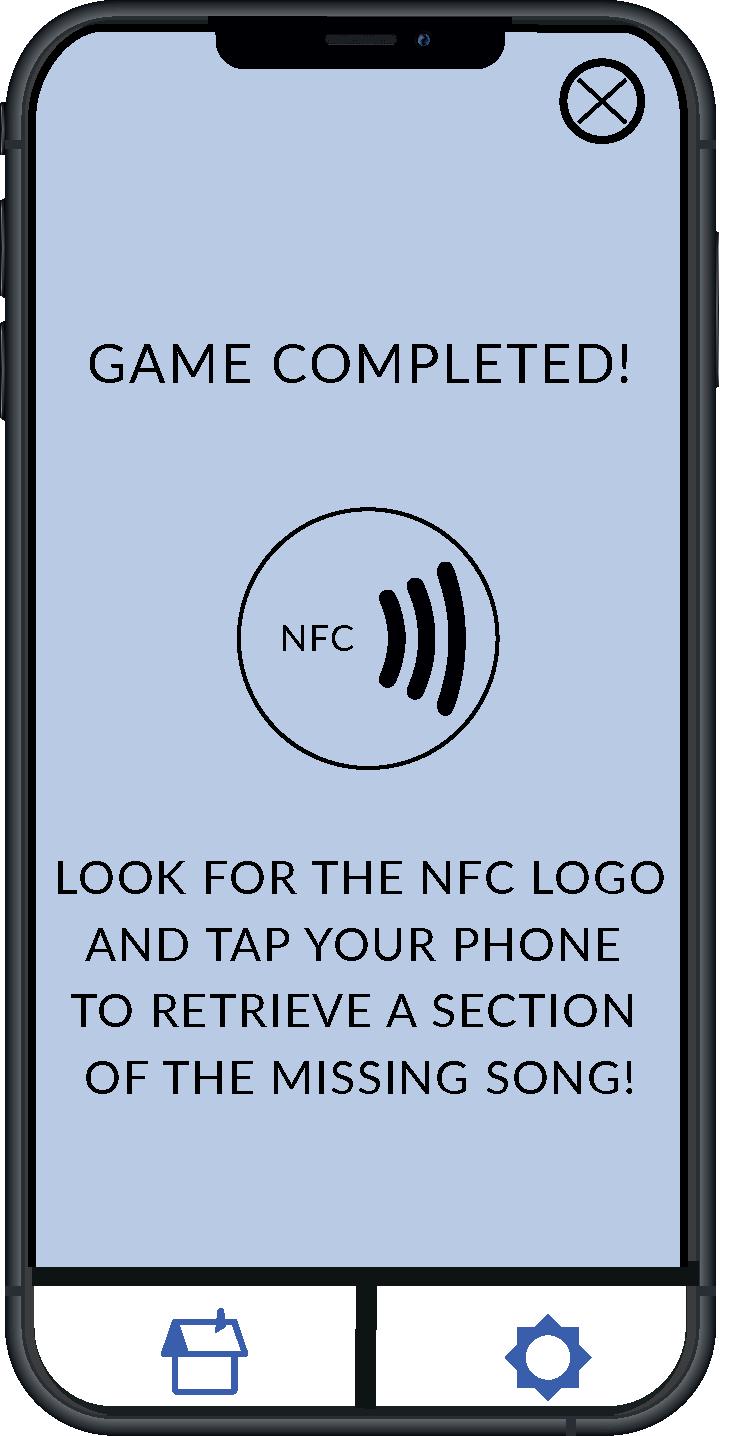
Right: Screen shown upon successful collection of song fragment from NFC contact point.


Song Collectables Storyboards

The range of the technology is appoximately 10 centimetres, which is appropriate for the controlled and regulated recommended route throughout the exhibition. Similar technologies that could have been implemented are Bluetooth Low Energy beacons (BLE) and geofencing, however the active ranges of those techniques are far too large (80 metres and up) and also require more external technologies such as a strong WiFI network, GPS services and small radio transmitters.
In order to ensure accessibility, anthropometric data will be used to measure the physical locations of the contact points so physically disabled participants will not be excluded from the experience. Clear indicators and instructions will be present at all contact points, available as written text with support for textto-speech, braille and simple imagery for participants who may struggle with interpreting words.
Left: Visual song fragment map/ tracker and menu, participantas will be able to play collected fragments from here and also view which fragments have yet to be collected.
Above: Visual song waveform with playback buttons. Highlights indicate individual fragments with further information available upon tap interactions.
